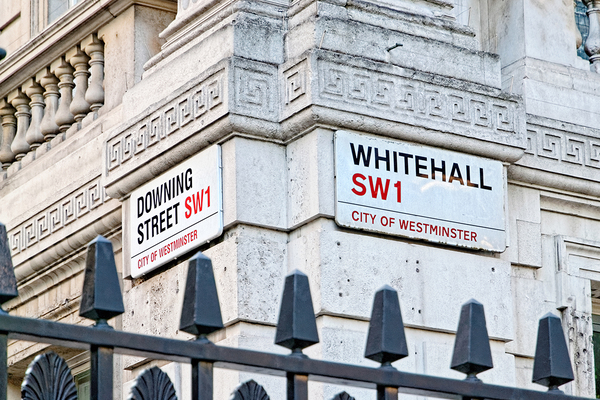 Jules Birch
Jules BirchThe contradictions in the government’s housing plan
Jules Birch assesses the plans published by the Ministry of Housing, Communities and Local Government last week
What was billed as a statement about planning to follow the Budget was actually a declaration of intent about the future of housing – with some glaring contradictions at its heart.
An oral statement to the commons and accompanying policy paper from housing secretary Robert Jenrick foreshadow not just the planning and social housing white papers but also a new housing strategy that will be published alongside the Spending Review in the autumn.
By my reckoning, this will be the first housing strategy to be billed as such since David Cameron’s “radical and unashamedly ambitious” strategy which pledged to “get Britain building” in 2011.
Given what’s happened since, and the fact that a press release from last week promises exactly the same thing, it begs a few questions about what exactly the government has been doing in the meantime.
In a preview of what’s to come, Mr Jenrick’s statement retains some of the new directions taken under Theresa May while reprising Mr Cameron’s emphasis on homeownership.
He said: “We are finalising details for a new Affordable Homes Programme, which will deliver homes for social rent as well as for affordable rent, shared ownership and supported housing. There will be a route to ownership for all, regardless of the tenure at which people begin.”
If the good news is the commitment to social rent, the last sentence looks like confirmation that all new housing association homes will have strings attached on shared ownership Right to Buy.
More generally, the common thread running through both is ‘supplyism’, the belief that building more homes can solve all our housing problems.
However, the government is now much more explicit about seeing the planning system as the main barrier to achieving this ambition. According to the policy paper, technology and the way we live and work have been transformed since the Town and Country Planning Act 1947, but “the planning process has failed to keep pace. It is now complex, out-of-date and fails to deliver enough homes where they are needed. We will act to change this”.
There will be “a more proactive approach to enabling homebuilding”, including “innovative options” such as housing-led regeneration of high streets, “densifying gently” existing residential areas, and making the most of under-utilised brownfield.
These are fine words but the policy paper has some solutions which sound familiar: a national brownfield land map, a review of the formula for calculating local housing need and requiring local authorities to have an up-to-date local plan by 2023 (something that was meant to happen by 2017). It also has tweaks to existing mechanisms such as the Housing Delivery Test and New Homes Bonus.
Some are more innovative, including greater use of zoning to simplify the process of granting planning permission and implementing the “fast track for beauty”.
Promisingly, the housing secretary intends to take action to ensure that permissions are built out by “requiring complete transparency on land options” (the murky system of acquiring land before it gets permission).
But some are controversial, with two major extensions of permitted development to allow upwards extensions of purpose-built blocks of flats and redevelopment of vacant commercial, industrial and residential blocks.
And this is where the contradictions start to mount up. Both measures are designed to get more homes built in urban areas where they are really needed and should go some way to achieving that.
But the problems with the existing regime for conversions of offices and warehouses are well known – you do not have to look very hard to find awful examples of tiny studios crammed into old office blocks for maximum profit.
These are the very opposite of beautiful design, as the Building Better, Building Beautiful Commission noted forcefully in its report.
Many, including social landlords, will see great opportunities in extending their purpose-built blocks upwards, but there are obvious concerns about poor design and construction, flouting of space standards and fire safety.
In the private sector, the effect could be to enrich freeholders and make it harder and more expensive for leaseholders to enfranchise – the exact opposite of what reformers want to achieve.
In the November Budget of 2017 and again in the Spring Statement last year, the government said it was considering a new permitted development right to allow commercial buildings to be demolished and replaced with homes.
In a consultation response published in May last year, only a third of respondents supported the idea, and as the government summarised: “Generally, it was considered that such a right would go beyond what is capable of or appropriate to be delivered through a national permitted development right.”
Despite this, the policy has now hardened into a “right to allow vacant ‘commercial’, ‘industrial’ and ‘residential’ blocks to be demolished and replaced” and it will now go ahead with a consultation on the details.
All this before a review of the existing system and the quality of homes delivered under it that was promised last year has even been published.
Instead we are told that buildings that are demolished will be “replaced with well-designed new residential units which meet natural light standards”. How will this be achieved in a deregulated system with no requirement for planning permission?
Permitted development also allows developers to evade any requirement to provide affordable homes – this at the same time as First Homes threaten to swallow up most existing Section 106 contributions.
And who judges whether a block is vacant? It’s not hard to see this turbocharging estate regeneration with little say for local authorities and fewer safeguards for residents at the same time as it inflates the price of brownfield land.
As his letter rejecting the proposed London plan makes clear, the housing secretary regards resident ballots on regeneration as an unduly “onerous” condition. This, astonishingly, at the same time as he continues the Conservative hostility to infill development on large suburban plots as “garden grabbing”.
“More radical thinking about land value capture and new towns seems to be missing from the housing secretary’s vision”
More contradictions can be found in what is not mentioned in either the statement or the policy paper.
That phrase about “densifying gently” existing residential areas covers some good ideas like building “above and around” stations but it stops well short of more contentious ones such as development near stations or on wasteland in the green belt.
More radical thinking about land value capture and new towns seems to be missing from the housing secretary’s vision.
At a more basic level, rhetoric about creating “a world-class and properly resourced planning service” has not yet been matched by actual cash.
Four years after all new homes were originally meant to be zero carbon, the Future Homes Standard and the prospect of one net-zero development in the East Midlands – at the same time as the Budget pours cash into road building – hardly look to be at the cutting edge of tackling climate change.
Above all, perhaps, there is no acknowledgment that supplyism and deregulation might just not be enough fix our housing problems on their own.
However, the full housing strategy and planning and social housing white papers are obviously still to come so perhaps there is still time to address these concerns.
And the fact that they are coming at all is a welcome sign that housing is still being taken seriously at the heart of government.
Jules Birch, award-winning blogger
Sign up for our daily newsletter
Already have an account? Click here to manage your newsletters












